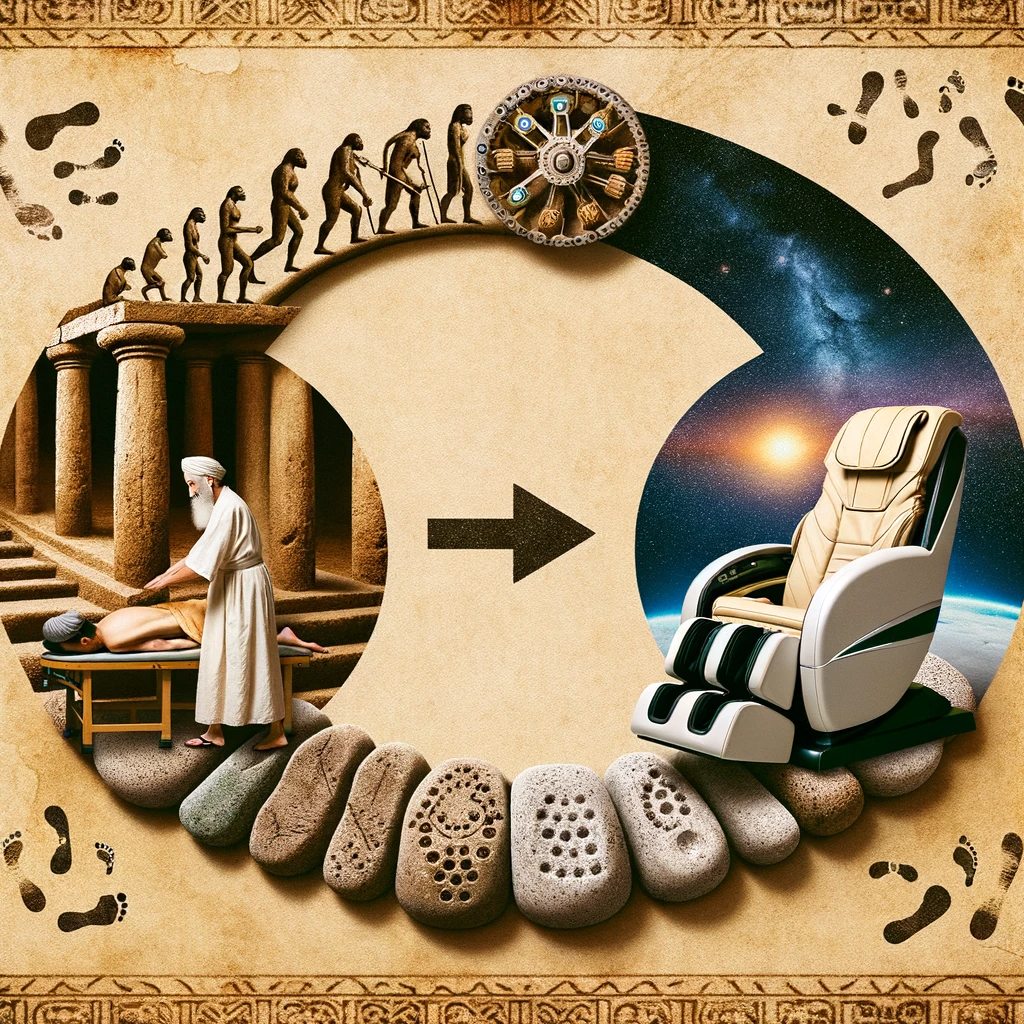Traditional massages have been a staple of relaxation for centuries. Fast forward to today, and we’re blessed with the wonders of technology, bringing the spa to our living rooms. But how exactly did we transition from manual to machine? Let’s embark on an enlightening journey to understand how massage chairs work, merging age-old practices with the marvels of modern engineering.

A Touch of History: The Art of Manual Massage
Massage, in its most basic form, is as ancient as human civilization itself. Historical records from China, Egypt, and Greece highlight the therapeutic use of touch to alleviate pain and promote relaxation. Traditional techniques, like the Swedish or Shiatsu massage, relied on the therapist’s hands and intuition to soothe the body and spirit.
The Dawn of Mechanization: Early Attempts
The late 19th and early 20th centuries saw inventors experimenting with mechanical devices to replicate human touch. These initial massage machines were rudimentary, often using simple vibrations or roller-based systems. While they couldn’t fully emulate a masseuse’s touch, they marked the beginning of a new era.
Evolution in Motion: The Birth of the Massage Chair
By the mid-20th century, with advancements in technology and a better understanding of human anatomy, the first massage chairs made their debut. These chairs utilized basic rollers, vibrations, and heat elements, offering users a semblance of the traditional massage experience.
Sophistication and Personalization: The Modern Massage Chair
Today’s massage chairs are a culmination of decades of research and innovation. Incorporating a blend of rollers, airbags, heating elements, and body scanning tech, they offer a personalized massage experience:
- Rollers: Modern chairs use advanced track systems, allowing rollers to move in complex patterns, closely mimicking human hands.
- Airbags: Strategically placed to create pressure, they can simulate various massage techniques.
- Body Scanning: Ensures that the chair adapts its techniques to the user’s unique anatomy.
Bridging Cultures and Techniques
Interestingly, as the technology behind massage chairs evolved, so did its integration of diverse massage traditions from around the world. Today’s chairs often offer a blend of Swedish, Shiatsu, Thai, and even Tui Na massage techniques, encapsulating a global relaxation experience.
Artificial Intelligence: The Future of Relaxation
As we move further into the 21st century, AI is set to revolutionize massage chairs. Future models will not just adapt to physical contours but also learn user preferences, detect stress points through biofeedback, and even synchronize massage rhythms with a user’s heartbeat.
Conclusion
The journey from traditional massages to robotic relaxation is a testament to human innovation. As we blend ancient wisdom with cutting-edge technology, it’s evident that the core principle remains unchanged: the pursuit of relaxation, wellness, and a deep connection between the body and mind. As we sit back in our modern massage chairs, we’re not just experiencing the marvels of engineering but also a rich tapestry of history and tradition.